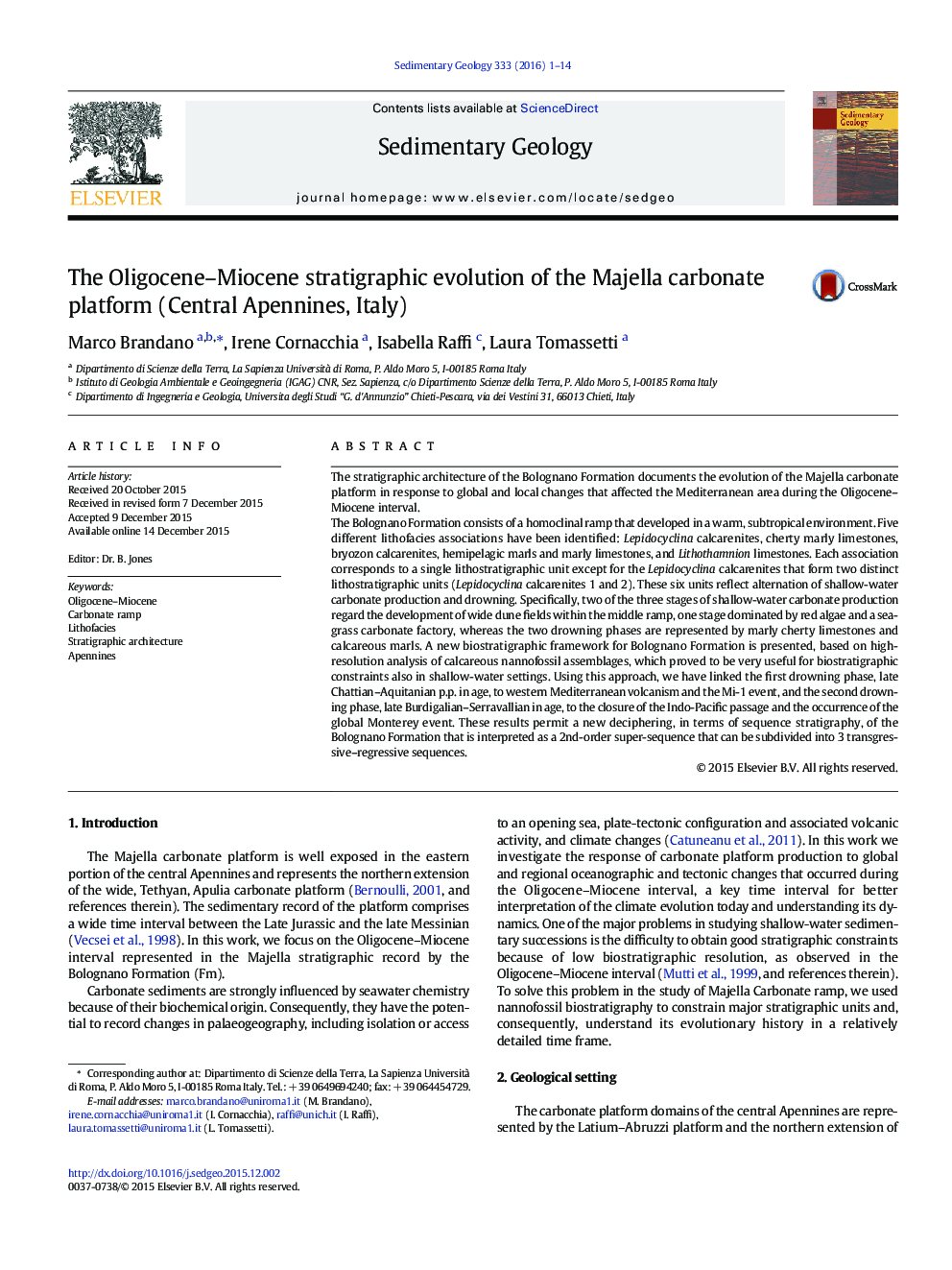| کد مقاله | کد نشریه | سال انتشار | مقاله انگلیسی | نسخه تمام متن |
|---|---|---|---|---|
| 4689117 | 1636030 | 2016 | 14 صفحه PDF | دانلود رایگان |

• Architecture of Oligo–Miocene Majella platform as result of global and local changes
• Six units are representative of three stages of shallow-water carbonate production.
• Two marly intervals reflect two deepening phases related to nutrient input.
• Investigated succession is a 2nd order sequence displaying 3 R–T sequence.
The stratigraphic architecture of the Bolognano Formation documents the evolution of the Majella carbonate platform in response to global and local changes that affected the Mediterranean area during the Oligocene–Miocene interval.The Bolognano Formation consists of a homoclinal ramp that developed in a warm, subtropical environment. Five different lithofacies associations have been identified: Lepidocyclina calcarenites, cherty marly limestones, bryozon calcarenites, hemipelagic marls and marly limestones, and Lithothamnion limestones. Each association corresponds to a single lithostratigraphic unit except for the Lepidocyclina calcarenites that form two distinct lithostratigraphic units (Lepidocyclina calcarenites 1 and 2). These six units reflect alternation of shallow-water carbonate production and drowning. Specifically, two of the three stages of shallow-water carbonate production regard the development of wide dune fields within the middle ramp, one stage dominated by red algae and a sea-grass carbonate factory, whereas the two drowning phases are represented by marly cherty limestones and calcareous marls. A new biostratigraphic framework for Bolognano Formation is presented, based on high-resolution analysis of calcareous nannofossil assemblages, which proved to be very useful for biostratigraphic constraints also in shallow-water settings. Using this approach, we have linked the first drowning phase, late Chattian–Aquitanian p.p. in age, to western Mediterranean volcanism and the Mi-1 event, and the second drowning phase, late Burdigalian–Serravallian in age, to the closure of the Indo-Pacific passage and the occurrence of the global Monterey event. These results permit a new deciphering, in terms of sequence stratigraphy, of the Bolognano Formation that is interpreted as a 2nd-order super-sequence that can be subdivided into 3 transgressive–regressive sequences.
Journal: Sedimentary Geology - Volume 333, 15 March 2016, Pages 1–14